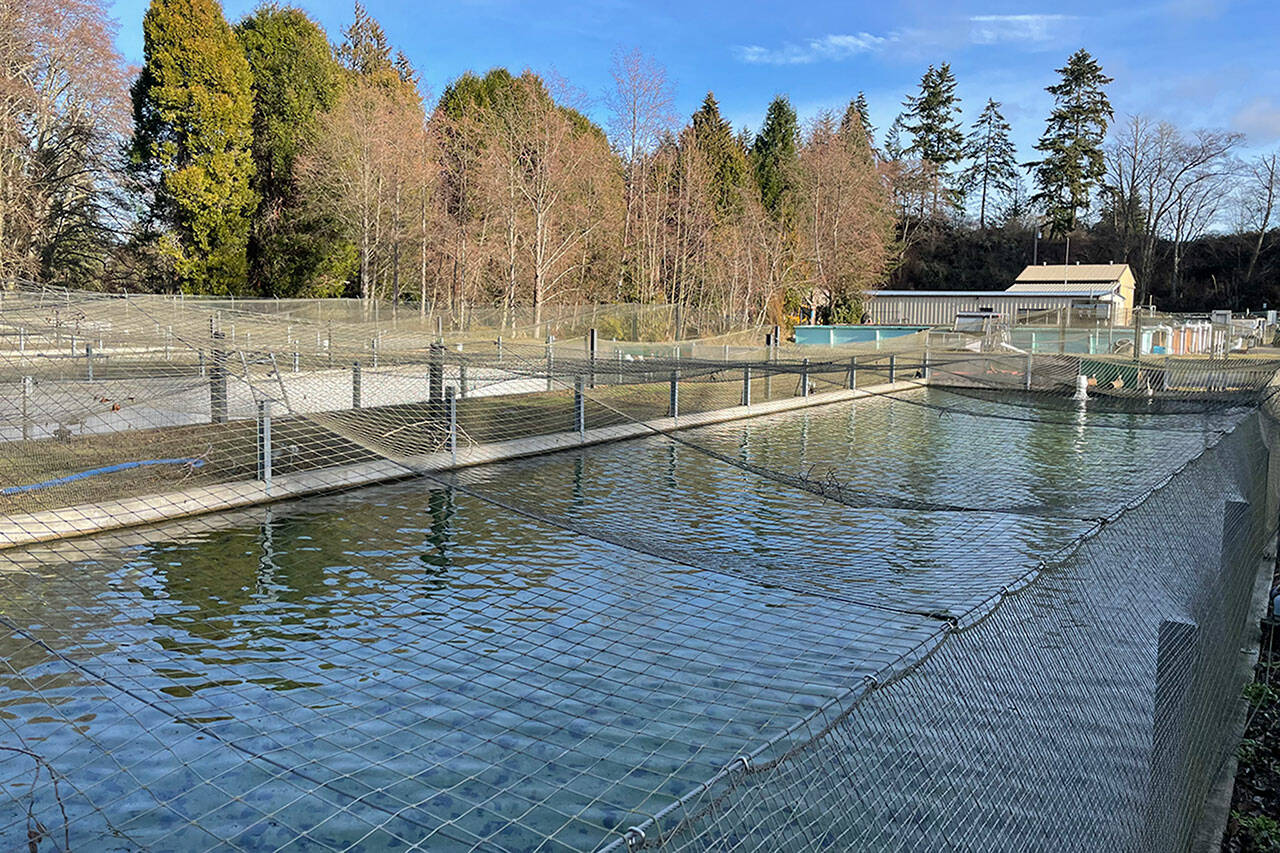Construction tentatively begins soon to relocate and rebuild Hurd Creek Hatchery, 939 Fasola Road, away from the Dungeness River’s floodplain.
The state’s Department of Fish and Wildlife, who owns and operates Hurd Creek Hatchery, awarded the lowest of four bids to Interwest Construction Inc. of Burlington for $8.092 million in December — more than $2 million less than the second lowest bid.
The firm notably reconstructed a portion of West Fir Street by Sequim schools for the City of Sequim.
State staffers estimated the hatchery relocation project to cost about $9 million.
Mike Nicholas, Fish and Wildlife construction project coordinator, said staff anticipates Interwest beginning construction in February and finishing in June 2024.
“(New facilities) will allow us to rear fish more safely and efficiently,” said Jeff Gufler, a fish hatchery specialist IV who oversees Dungeness, Elwha and Hurd Creek Hatcheries.
For more than a decade, state officials have planned to relocate the hatchery with the Dungeness River beginning to migrate in 2009 after a large tree fell into the water collecting woody debris and causing the bank to erode near the hatchery, according to a 2016 Sequim Gazette story.
Erosion was amplified at various points due to winter flooding in 2015.
“We had a foot of water in the hatchery building (then),” Gufler said. “The big thing though was fish prematurely releasing (due to high waters).”
Since 2015, there have been some high water events but nothing to that level, as retaining walls were installed on the west side of the property by Hurd Creek, Gufler said.
Each year, the hatchery rears about 450,000 Elwha fall chinook and 200,000 Dungeness spring chinook — both threatened species — along with 10,000 steelhead, 5,000 coho, and 3,000 rainbow trout.
Hurd Creek staff raise fish until they are about 3 inches long depending on the fish before they’re distributed to the Dungeness or Elwha Hatcheries, or planted in the Dungeness River by the Dungeness Schoolhouse, Gufler said.
The new hatchery will move about 1,000 feet further from the Dungeness River, Nicholas said,
“We’re not just rebuilding the same thing. It includes more efficient ponds and adds room to grow,” Gufler said.
According to state documents, Interwest will demolish/remove many of the existing structures, relocate designated existing ponds, and construct new hatchery and office buildings, 10-foot by 100-foot raceways, a water reuse system and more.
Nicholas reports the new hatchery building will be 2,760 square feet, the office 636 square feet, and a treatment building 160 square feet.
The build includes three separate rooms for fish incubation inside the hatchery building along with a bucket lift system to make the facility “more ergonomically efficient,” he said.
The existing shop building, pollution abatement pond, and domestic well house will remain, Gufler said, as they remain out of the high risk flood plain.
The new site will feature 84 ponds for fish compared to 66 now with some salvaged, he said, and others given to other state hatcheries while the existing large pond will be pulled out and backfilled.
Demolition must wait until new structures are operational though, according to state staff.
“We want to do it at a time of year with the least impact on fish and when we’re not at full capacity,” Gufler said.
The logistics of that are still being planned for that, he said.
As the new facility becomes operational, Gufler said they’ll maintain three full-time staffers as one of those positions just moved from seasonal about a month ago.
Hurd Creek Hatchery opened under the state in 1980, according to state documents.



